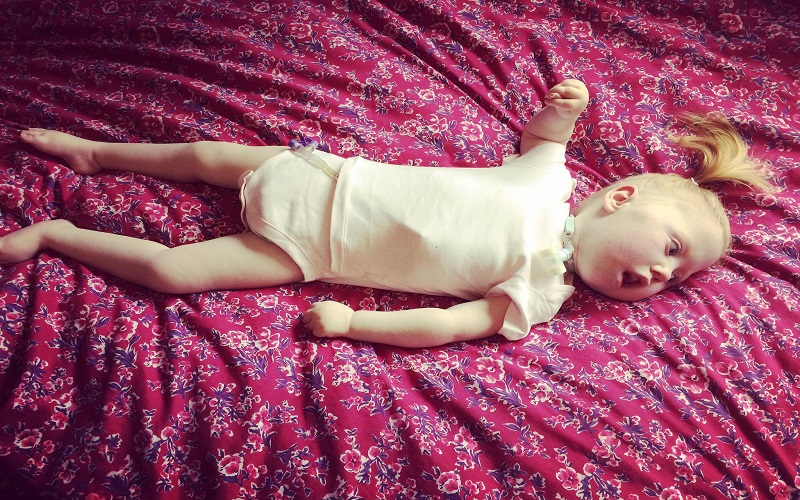We were still in hospital – Heidi had been born, full term and after a healthy pregnancy, but suffered a HIE (hypoxic ischemic encephalopathy) event shortly after birth.
Her brain had gone without oxygen and, as we later found out, there was significant damage.
The first medical term that was given to us was HIE.
I did what no-one in hospital should do, I googled it.
Having never heard the term before I didn’t have a clue what it meant.
We’d been given a booklet from Bliss that had some information on it, but I wanted to know exactly what the prognosis was.
Now with hindsight, I fully understand that no-one can tell you how the future is going to pan out, and each child is wonderfully different, but I felt like I needed something more than a leaflet; I needed to grasp hold of a thing, a concept, hope.
When Heidi was about 4 weeks old we were transferred from NICU to the Children’s Unit at our local hospital.
We were called to a meeting with the consultant to discuss Heidi.
This was a no-nonsense meeting and boy did some of the comments hit me hard.
Words like “severely disabled” and “advanced care plan” rang in my ears.
Something good did come out of it though – the phrase “likely to be diagnosed with cerebral palsy” was used.
Now don’t get me wrong, I’m sure there’s news that parents would be happier to hear, but for me this made sense.
I had heard of cerebral palsy, and because it was slightly familiar it didn’t seem as scary.
When we got out of that meeting, Steve (hubby) said “Lewis Hamilton’s brother has cerebral palsy, and he drives race cars”.
What? Really? Heidi might go on to be an F1 champion?
I knew it, I knew it was going to be alright!
Ok, so I may have got a little carried away there, but my google searches soon switched from “HIE” to “Nicholas Hamilton Racing Driver”.
In between watching the monitors that were hooked up to Heidi, I was watching YouTube clips of Nicholas, an inspirational guy who had beaten the odds to overcome his CP challenges.
It lifted me and gave me hope.
As Heidi’s got older, even though we are a “never say never” type of family, I’m pretty sure that she won’t be able to drive.
Our expectations are realistic and we’re hoping that one day unaided sitting may be achieved, but we take it a day at a time.
Our aim is for her to stay as healthy as possible, and to be surrounded by love.
Funnily enough though she does seem to enjoy watching car racing.
We often go as Steve volunteers on the Rescue Unit, mainly at Oulton Park and sometimes we’ve gone down to Silverstone.
She may not be behind the wheel but with the right pair of ear defenders she can certainly still be in on the action.
I know that for some people, getting a diagnosis, whether its cerebral palsy or something else, can be a really difficult time.
For us we found that it made life easier in terms of explaining how Heidi was, and for accessing the right support, but we don’t use it as a label for her.
She’s Heidi, and she isn’t defined by her cerebral palsy.
Our journey may have taken us on a different track to Nicholas but I often think of how he, unknowingly, gave me that glimmer of hope on a dark day.
If you ever get to read this Nicholas, thank you!
